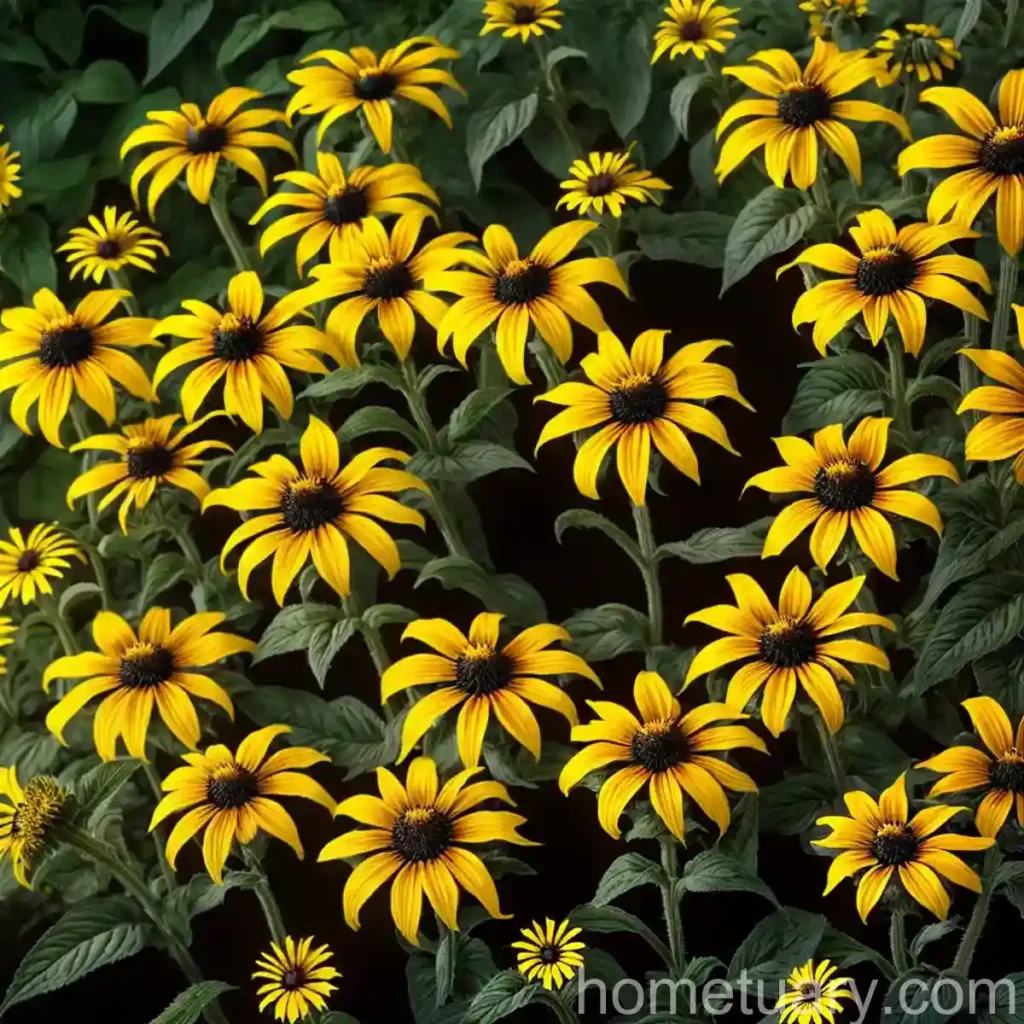Plant Name: Black-eyed Susan (Rudbeckia hirta ‘Prairie Sun’)
What is Black-eyed Susan (Rudbeckia hirta ‘Prairie Sun’)?
Black-eyed Susan, scientifically known as Rudbeckia hirta ‘Prairie Sun’, is a striking perennial flower that belongs to the Asteraceae family. It is a popular garden plant owing to its vibrant yellow petals and dark brown center. This cultivar is a hybrid of Rudbeckia hirta, a species native to North America, known for its resilience and ability to attract pollinators.
Key Takeaways
- Common Name: Black-eyed Susan ‘Prairie Sun’
- Scientific Name: Rudbeckia hirta ‘Prairie Sun’
- Type: Perennial
- Native Habitat: North America
Culture
When it comes to the culture of black-eyed Susan ‘Prairie Sun’, it’s essential to understand its environmental preferences and requirements to ensure its healthy growth and development. From water and sunlight needs to soil and fertilizer requirements, each aspect plays a crucial role in nurturing this beautiful flower.
Uses
Black-eyed Susan ‘Prairie Sun’ holds various uses, ranging from ornamental to ecological benefits. It is a favored choice for gardeners aiming to attract pollinators, such as bees and butterflies, due to its vibrant blooms. Additionally, it adds a splash of color to gardens, borders, and naturalized areas.
Water
Proper watering is vital for the health of Black-eyed Susan ‘Prairie Sun’. This plant generally thrives in well-drained soil and prefers moderate moisture levels. However, it’s resilient to drought conditions once established. Overwatering should be avoided to prevent root rot.
Sunlight
This cultivar thrives in full sun, requiring a minimum of 6 to 8 hours of direct sunlight per day. Adequate sunlight not only promotes robust growth and abundant blooms but also enhances the vibrancy of its signature yellow petals.
Fertilizer
Regular fertilization can contribute to the optimal growth and flowering of Black-eyed Susan ‘Prairie Sun’. Incorporating a balanced, slow-release fertilizer in early spring can provide essential nutrients for the plant’s development. However, it’s crucial to follow recommended application rates to prevent over-fertilization.
Soil
Black-eyed Susan ‘Prairie Sun’ favors well-drained, loamy soil. It’s essential to ensure good soil drainage to prevent waterlogging, as this can lead to root rot and other issues. Amending the soil with organic matter, such as compost, can enhance its texture and nutrient content.
Pruning
Pruning can help maintain the shape and vigor of Black-eyed Susan ‘Prairie Sun’. Deadheading spent blooms not only encourages continuous flowering but also prevents the plant from self-seeding excessively. Additionally, pruning can be done in early spring to remove any damaged or overgrown foliage.
Propagation
This cultivar can be propagated through various methods, including division, seed sowing, and stem cuttings. Dividing mature clumps in early spring or fall can help rejuvenate the plant and provide new individuals for propagation. Collecting seeds from mature flower heads also offers an economical means of propagation.
Container Popularity
Due to its compact size and striking blooms, Black-eyed Susan ‘Prairie Sun’ is well-suited for container gardening. Its ability to thrive in container environments makes it a popular choice for small gardens, balconies, and patios.
Common Diseases
While Black-eyed Susan ‘Prairie Sun’ is relatively resilient, it can be susceptible to certain diseases and pests. Recognizing common diseases and implementing preventive measures is crucial for maintaining the plant’s health and longevity.
Disease Diagnosis
The notable diseases that can affect Black-eyed Susan ‘Prairie Sun’ include powdery mildew, leaf spot, and root rots. Identifying the characteristic symptoms, such as white powdery patches on leaves or dark spots, can aid in early diagnosis and prompt treatment.
Common Pests
Pests can pose a threat to Black-eyed Susan ‘Prairie Sun’, potentially impacting its overall growth and appearance. Keeping an eye out for common pests and implementing appropriate pest control measures can help safeguard the plant from damage.
Botanist’s Tips
- When cultivating Black-eyed Susan ‘Prairie Sun’, consider companion planting with species that can complement its growth habits and provide ecological benefits, such as attracting pollinators and deterring pests.
Fun Facts
- Black-eyed Susan ‘Prairie Sun’ is named after its distinctive brown-black center, resembling the eye of a black-eyed susan.
- This cultivar is known for its ability to thrive in various climates and soil conditions, showcasing its adaptability as a garden plant.
- The attractive blooms of Black-eyed Susan ‘Prairie Sun’ make it an excellent choice for cut flower arrangements, adding a cheerful touch to indoor spaces.
Links to External Resources
- The Plant Encyclopedia
- Gardeners World
- Royal Horticultural Society
- University of Florida IFAS Extension
In conclusion, Black-eyed Susan ‘Prairie Sun’ is a captivating addition to gardens, offering vibrant blooms and ecological benefits. Understanding its culture, common diseases, and maintenance requirements is integral to nurturing this perennial plant successfully. Whether planted in beds, borders, or containers, its cheerful presence and resilience make it a valuable asset to diverse garden settings. With careful attention and proper care, this cultivar can thrive and brighten landscapes with its radiant display of color and charm.
By Dr. [Your Name]
Plant Scientist















